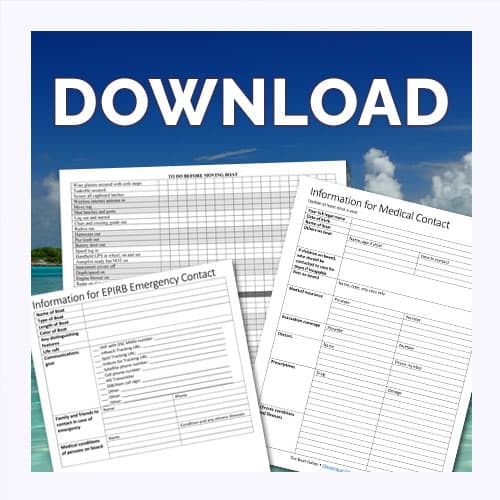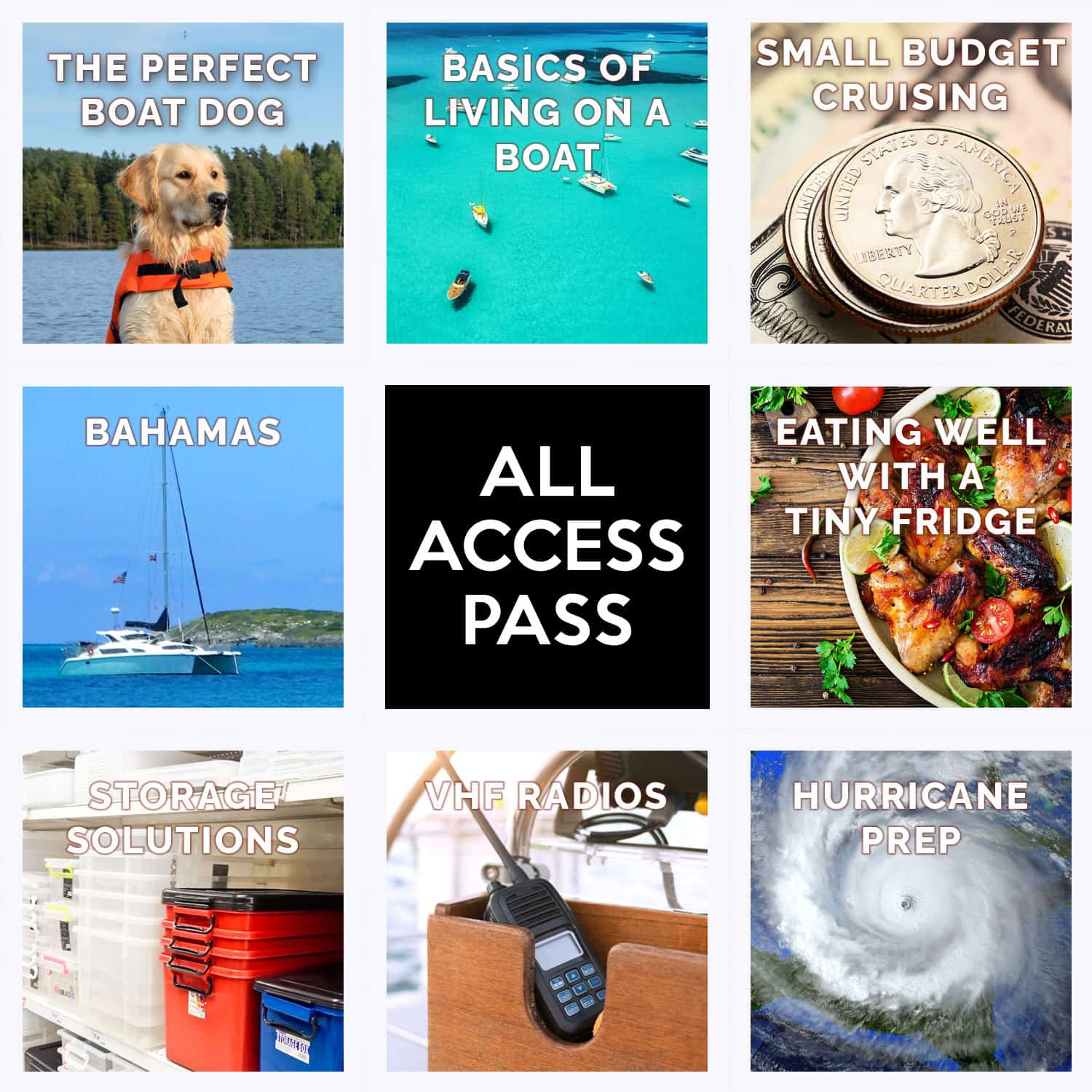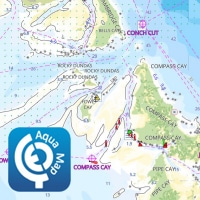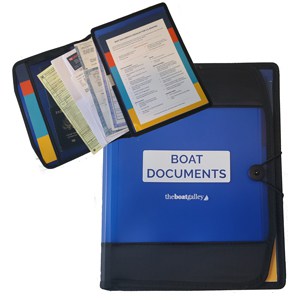Is there any such thing as an affordable diesel heater for a cruising boat? Yes!
As a Canuck from northern Ontario, I have a lot of experience in keeping warm. That experience has proven invaluable while coming south in the fall when Old Man Winter has occasionally caught up with me.
A Portable Propane Heater
I have used the Mr. Buddy propane heater (Amazon), which Carolyn mentioned in her article, Easy Way to Add a Little Heat on a Boat. It was awkward to use as it needed to be stored when not in use.
I then got a propane ice hut heater, which I permanently attached to an interior bulkhead. It required a feed from a 10 or 20-pound propane bottle as it doesn’t work on a one-pound size. So you’re either looking at an extra propane tank, or cutting into your current propane line, but at least it’s not underfoot as the Buddy was.
To improve the heater’s performance, I mounted a fan above it. It worked wonderfully, rapidly heating the boat to t-shirt temperatures in minutes. All that for under $200 including the fan.
Issues with Propane Heaters
A few issues with propane heaters – one, since they utilize an open flame, the unit consumes oxygen. If you get one, make sure it has an oxygen depletion sensor that will shut it down if oxygen levels get too low. However, these units don’t require a chimney to the outside, making installation much easier.
Secondly, they obviously create carbon monoxide. If you don’t have a CO detector already, you’ll want one for this unit. I never had a problem, but always use caution with any open flame.
Third, they use a lot of propane, especially if you choose to run one overnight. You’ll run through a 20-pound tank fairly quickly, generally in two or three nights of eight-hour use.
As much as I liked this unit, I never ran it overnight, only while I was awake for the aforementioned reasons, and then restarted it in the morning to warm the boat back up.
Lastly, propane is a very “wet” fuel. In weather under 45°, you’re going to get a lot of condensation, and that will lead to mildew problems. You’ll need to wipe down the ceiling and walls on chilly mornings.
Diesel Heater Options

When my unit finally quit, I looked around for a replacement and discovered diesel heaters, sometimes referred to as “parking”, or “bunk” heaters. You might be familiar with the Webasto or Espar units, made in Germany and the US respectively. Truckers frequently use these heaters for cabin heating and they start at $1000. and up. Defender carries one model at $3200. You might find one new on eBay for a couple of hundred less.
These are very versatile units with several advantages. First of all, you don’t have to mount the unit within your living space. You can mount it in an outside locker and run ductwork into your boat.
This means that the heater’s exhaust is outside your living area, improving safety.
They run on diesel, as the name implies. If you want, you can plumb one into your onboard diesel, rather than use the small tank supplied with them.
But… but…. Over $1000 for a unit I might use for a few weeks while going south?
I know – painful, that’s what I thought too. Then, courtesy of Google, I discovered Chinese diesel heaters.
Chinese-Made Diesel Heaters
These are all the rage in the RV world, with young travelers installing them in their conversion vans to keep warm. To all appearances, they are the same as the more expensive German units, but considerably cheaper – as in under $100 on sale cheaper. Mine cost $120. More on this later!
So I found my own Chinese diesel heater and the adventure began. And what an adventure.
The Chinese models are effectively identical in appearance to the Webasto and Espar units. You have the heater, the control panel, a small diesel tank, a fuel pump, an exhaust hose, a fuel hose, a short piece of ducting, and some other miscellaneous parts as shown below.

Installing My Diesel Heater
Installation isn’t particularly difficult and takes no more than a screwdriver and wrench. Most boaters install their units in an outside locker and cut a hole into the interior for the ductwork. Some boats hide the ductwork behind panels, which makes for a clean-looking installation with just the vent showing. Every boat will be different.
Hooking up the electrical and fuel is again quite simple. It’s pretty much plug-and-play. Don’t forget to install a properly sized fuse.
Interpreting My Diesel Heater Manual
The fun started when I read the manual to fire the heater up. The manual is incomprehensible, non-standard English. This was, by a factor of 1000, the most challenging manual to understand that I have ever seen.
For example, what on earth does this mean: “…which makes gears clearly shown and is very convenient for the part old hands”? That is from a discussion on setting the temperature. There are no gears, and what in blazes is “part old hands”? I still don’t know.
Then there’s the terminology used. You have a “down regulation” and an “up-regulation” button. That’s not so hard to figure out, but the “down regulation” button sits on the right of the control panel, not the left as one would expect. And they are not marked with an arrow to make it clear which is which. The entire manual is filled with terms that you have to figure out before you can determine how to use the heater.
So although I was able to turn the heater on fairly quickly, I couldn’t regulate the temperature and was quickly sweating in 85° heat.
There had to be a solution. But there wasn’t, and I really, really tried.
I took some of the phrasing that I felt explained my problem, copied it into a Chinese translator, and attempted to get answers there. But even Google couldn’t figure it out. Gibberish at both ends.
I reread the manual probably a dozen times. The light never went on for me, but I’ll be honest. I lose patience with this kind of thing. Others might have figured it out.
I finally gave up on the manual and went to YouTube and the internet for answers where I found several groups dedicated to these heaters. I found some answers there, and between those and the manual, eventually figured out the basic operations, and how to regulate the heat.
How I Operate It
I was never able to figure out how to set the unit to turn on and off at designated times, but as it turns out, it didn’t matter, because, fortunately, my unit has a remote control fob. Basically, I gave up on learning the timing function because, lying in bed, I can turn the unit on and off with the fob. Yay!
Believe me, when it’s 40° outside and you do NOT want to put your feet on that cabin sole, knowing you have the fob under your pillow that will fire up your heater and warm the boat up before you get up is a wonderful feeling.
Since the unit is outside the cabin and the exhaust is vented outside my boat and presents no CO danger, I run the unit at its lowest speed all night. This is quite economical, and my 2.5-gallon tank lasts over twenty hours at this speed. Fuel consumption is advertised as 0.1-0.24 L/H. I think that’s a bit optimistic, but it’s not far off. Or perhaps there’s an adjustment I haven’t found yet? Wouldn’t surprise me at all.
]If it’s at all chilly when I get up, I adjust the unit to high for a few minutes and then reduce the fan speed. Generally, by the time my coffee is ready, it’s a comfy 72° in the boat.
Contacting the Manufacturer
Those of you who know me have probably figured out that I contacted the manufacturer about this. Yes, I did, and requested a manual written in proper English. The customer service guy in California was unable to get one for me, the technicians in China didn’t speak English so he couldn’t ask them, and after several calls, he said he would credit me $17 for my trouble, or I could return the unit for a refund.
I told him “No thank you, I like the unit, I just need to know how to operate it properly”. This discussion went on for about two weeks, during which time the offered credit went from $17 to $40 to $70. Then, one day, PayPal advised me I’d received a full refund of the cost of the heater.
Still no English manual, but I’m warm and happy. And $120 richer.
Summary for my Diesel Heater
Some further details you’ll want to know.
You can purchase a self-contained unit with the fuel tank attached (the red unit below). Use it similar to a Mr. Buddy.

These heaters are quiet. You won’t hear anything more than a tiny click of the fuel pump, and not even that if you’ve installed it in an outside locker. They are a bit power-hungry when starting up, but only for a couple of minutes, then they settle down. Make sure you use adequately sized wiring for the load, otherwise, as I discovered, you can’t start the heater.
The ductwork does get hot, so be careful where you place it. You must vent the exhaust outside, and it’s very hot, so you need a stainless steel extension, as shown below. You might also need to purchase a longer exhaust pipe, depending on where you locate your unit.

Am I pleased with my purchase? Very much so. It does what it’s supposed to, at an economical price. It’s easy to install and use, (once you figure it out), and it appears to be a well-built unit. I’m in year two with mine and no issues. Replacement parts, if needed, are easily available. And with a unit replacement cost of under $100, if it does fail, it’s not a break-the-bank issue.
Wally Moran is a long time cruiser well known to East Coast sailors. A writer, author, speaker and the creator of the Sail to the sun ICW Rally, Wally and his pup Aduana continue to enjoy the cruising lifestyle.
Here’s your “Quick Start” to everything you need to know when living on a boat:











Marc says
many thanks… very useful as I’m about to get one for my sailboat 38′.
Richard Powers says
Which heater did you buy? I’m assuming it was the stand-alone because you mention the heater as being outside. So I’m a little confused about your installation, but I’m guessing that you simply are ducting the output into the cabin. Is this correct? I’m living aboard a 30ft sailboat and am interested in the simplest and most economical method if heating.
Your article was interesting. Thank you.